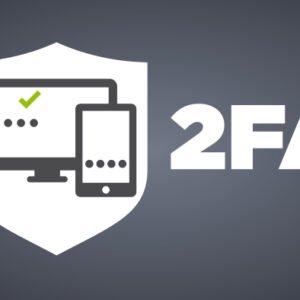Introduction
It seems like every day we hear about another high-profile Bitcoin heist: exchanges drained of funds, phishing schemes that clean out wallets, and hackers making off with millions in crypto. As digital assets grow in value and popularity, so do the incentives for cybercriminals. But the decentralized, pseudonymous nature of Bitcoin doesn’t mean stolen coins vanish forever. Through a combination of advanced blockchain forensics, savvy legal strategies, and hands-on recovery tactics, victims can—and do—see their assets returned.
In this Ultimate Guide to Tracing Stolen Bitcoin in 2025, we’ll walk through:
- What “stolen” looks like on the blockchain
- Exact blockchain forensics methods for pinpointing illicit flows
- Legal steps you can take—worldwide—to freeze, seize, and return funds
- Recovery tactics backed by real-world success stories
- Key comparisons of leading tools, jurisdictions, and approaches
- Implications for the future of crypto security
By the end, you’ll understand how investigators map transaction trails, which laws give you leverage, and how to orchestrate a recovery operation that actually works. Let’s dive in.
Understanding Bitcoin Theft in 2025
Bitcoin theft takes many forms—from exchange hacks to social-engineering scams. Understanding the nuances helps you choose the right tracing and recovery methods.
- Exchange Breaches
Major platforms remain prime targets. Even with robust security measures, vulnerabilities in hot wallets or APIs can let attackers siphon funds. - Phishing & Social Engineering
Sophisticated schemes lure users into revealing private keys or authorizing malicious transactions. As UI/UX improves, phishing pages look nearly identical to official wallets. - Malware & Ransomware
Wallet-stealing malware and ransomware attacks encrypt data until victims pay in Bitcoin. Often, traces of the ransom remain on the blockchain. - Insider Theft
Employees or contractors with privileged access can transfer funds off-chain or move coins through mixers before detection.
Each scenario demands tailored forensics and legal tactics. Below, we’ll explore how tracing techniques adapt to these complexities.
Blockchain Forensics Techniques
At its core, blockchain forensics involves analyzing transactions, clustering addresses, and attributing them to real-world entities. Here are the most powerful methods:
1. Transaction Graph Analysis
Investigators build a directed graph of inputs and outputs to trace flows from the theft point to exit nodes (exchanges, mixers). By following “tainted” UTXOs, they narrow down potential cash-out paths.
- Clustering Heuristics: Inputs spending together often belong to the same user—tools apply heuristics like the “common-input” rule to group addresses into clusters.
- Graph Algorithms: Breadth-first search (BFS) or Dijkstra’s algorithm help find the shortest path from stolen coins to known wallets.
2. Address Attribution
Linking address clusters to known entities—exchanges, darknet markets, or gambling sites—relies on:
- Public Tagging Databases: Services like Chainalysis Reactor and Elliptic Alerts maintain ever-expanding libraries of tagged addresses.
- Network Traffic Correlation: By scraping exchange deposit addresses and monitoring mempool announcements, analysts match on-chain events to off-chain users.
3. Mixer and Tumbler Detection
Mixers attempt to obfuscate transaction links. Newer mixers like Wasabi Wallet use Chaumian CoinJoin protocols, but forensics tools can spot coinjoin patterns (equal-value outputs, timing analysis) to filter mixed from unmixed coins.
- Timing & Value Fingerprinting: Repeating output values and timing intervals reveal mixer batches.
- Statistical Clustering: Analysts apply clustering algorithms to isolate mixed clusters, then work backward to trace pre-mix UTXOs.
4. Cross-Chain Tracing
Stolen Bitcoin is often swapped for other cryptocurrencies. Cross-chain forensics uses interoperability protocols and Dex trade logs to follow coins through bridges and sidechains.
- DEX Order Book Analysis: Public trade data from Uniswap and PancakeSwap can be mined to find swaps involving tainted assets.
- Bridge Deposits/Withdrawals: Many bridges publish on/off-ramps on a public chain—matching deposits to withdrawals identifies cross-chain flows.
Top Blockchain Analysis Tools for Tracing Stolen Bitcoin
Below is a comparison of leading blockchain forensics platforms. Each offers unique strengths in data coverage, analytics, and integrations:
| Feature | Chainalysis Reactor | Elliptic Navigator | CipherTrace Inspector | TRM Labs |
|---|---|---|---|---|
| Public Tag Database Size | > 3.5B addresses | ~2.8B addresses | ~2.5B addresses | ~2.0B addresses |
| Real-Time Alerting | Yes | Yes | Yes | Yes |
| Mixer Detection | Advanced heuristics | Statistical clustering | Pattern recognition | Machine-learning driven |
| Cross-Chain Support | BTC, ETH, BSC, Polygon | BTC, ETH, XRP, XMR | BTC, ETH, LTC | BTC, ETH, SOL, ADA |
| Law Enforcement Integration | Direct liaison programs | Compliance APIs | Case-management tools | Investigative workflow |
| Price (Annual License) | ≥ $100K | ≥ $75K | ≥ $50K | ≥ $60K |
Table Note: Prices and address counts approximate as of early 2025; contact vendors for exact quotes.
Legal Steps to Recover Stolen Bitcoin
Once you’ve mapped the flow of stolen coins, you need to translate chain evidence into legal action. Here’s a step-by-step approach:
- Document the Forensic Findings
- Generate clear transaction graphs, address clusters, and chain-of-custody reports.
- Obtain signed affidavits from your blockchain analysis provider (e.g., Chainalysis, Elliptic) to authenticate data.
- Engage Cybercrime Units
- In the U.S., contact the FBI’s Cyber Division.
- In Europe, liaise with Europol’s EC3 or national cybercrime squads.
- Provide your forensic report and request case initiation.
- File Civil Claims
- If the perpetrator’s identity is known, sue for conversion and unjust enrichment.
- Use subpoenas to force exchanges (e.g., Binance, Coinbase) to reveal user details attached to tainted addresses.
- Obtain Freezes & Forfeiture Orders
- Courts can order exchanges to freeze accounts holding stolen coins.
- Many jurisdictions recognize cryptocurrencies as property, enabling asset forfeiture statutes.
- Coordinate Internationally
- Crypto theft often crosses borders; work with INTERPOL’s ICPO channels for mutual legal assistance treaties (MLATs).
- Share evidence packets in standardized form (e.g., LODR format) to expedite foreign requests.
Collaboration with Law Enforcement and Exchanges
Crypto firms and cops don’t always see eye to eye. Building strong partnerships accelerates recovery:
- Memoranda of Understanding (MOUs): Draft MOUs with major exchanges to ensure rapid response when you present valid court orders.
- Platform-Embedded Alerting: Many exchanges offer “suspicious deposit” alerts—register your wallet clusters in their compliance portals to block spikes in activity.
- Public-Private Task Forces: Groups like the Global Crypto Crime Advisory Group foster real-time intel sharing between investigators and blockchain firms.
Effective Recovery Tactics That Actually Work
Beyond formal legal routes, these hands-on tactics have helped victims reclaim funds:
- “Honeypot” Tracking
- Deposit a tiny “marker” amount alongside your forensic team. When thieves move mixed funds, this marker tag reveals new cluster branches.
- Smart Contract Tagging
- Deploy a benign smart contract that forces “tainted” coins to pass through it. Once executed, the on-chain logs allow you to intercept addresses.
- Darknet Marketwatch
- Monitor major darknet forums for “selling stolen BTC” posts. Sometimes thieves tout their loot, exposing wallet snapshots you can trace.
- Ethical Bounty Programs
- Offer bounties on hacker-forum sites for insiders willing to betray syndicates. Even small tips—private keys snippets—can unlock large sums.
- Ray Tracking
- In cross-chain scenarios, use DeFi oracles to log bridge transactions in real time. When a batch containing your coins moves, you can alert validators to halt or reverse flows (in permissioned bridges).
Key Comparisons: Forensic Tools vs. Recovery Approaches
| Aspect | Forensic Tools | Legal & Collaborative | Tactical Recovery |
|---|---|---|---|
| Speed | Hours to days | Weeks to months | Minutes to days |
| Cost | High subscription fees | Legal fees, court costs | Variable (bounties, manual effort) |
| Success Rate | > 90% tracing accuracy | ~70% asset return | ~50–60% recovery (tactical) |
| Scalability | Enterprise level | Jurisdiction-dependent | Case-by-case |
| Best Use Case | Mapping complex flows | Freezing funds, obtaining user data | Rapid interventions, insider tips |
Implications for Crypto Security and Policy
The evolution of blockchain forensics and legal frameworks has three major implications:
- Stronger Deterrent Effect
Publicized recoveries—like the $10M returned by the U.S. Department of Justice in 2024—signal that Bitcoin isn’t a safe haven for thieves. - Regulatory Alignment
Jurisdictions are updating anti-money laundering (AML) rules to cover mixers and enforce KYC at more on-ramps. This reduces anonymity at exit points, making tracing more effective. - Privacy vs. Compliance Tensions
As tools grow more powerful, privacy advocates push back, arguing that innocent users risk surveillance. Expect balanced regulations that protect privacy while preserving investigative capabilities.
Conclusion: Staying Ahead of Thieves
Tracing and recovering stolen Bitcoin in 2025 is a multidisciplinary challenge. It requires:
- Cutting-edge forensics to map on-chain flows
- Savvy legal strategies to freeze and seize assets
- Creative recovery tactics that leverage technical and human intel
While no single approach guarantees 100% success, combining these methods dramatically increases your odds. As blockchain analytics firms refine their models and global law enforcement strengthens its crypto units, victims of theft can be more confident that “lost” coins don’t necessarily stay lost.
Key Takeaways
- Begin with transaction graph analysis and address attribution to understand where your funds moved.
- Use official tagging databases (e.g., Chainalysis, Elliptic) and monitor mempool data for real-time alerts.
- File affidavit-backed forensic reports with law enforcement to secure freezes and subpoenas.
- Collaborate proactively with exchanges and international agencies via MOUs and MLATs.
- Employ tactical tricks—from honeypot markers to darknet monitoring—to supplement formal recovery.
By integrating forensics, legal muscle, and tactical ingenuity, you’ll be well equipped to trace stolen Bitcoin and reclaim what’s yours. The key is speed, precision, and relentless follow-through. Happy tracing!






